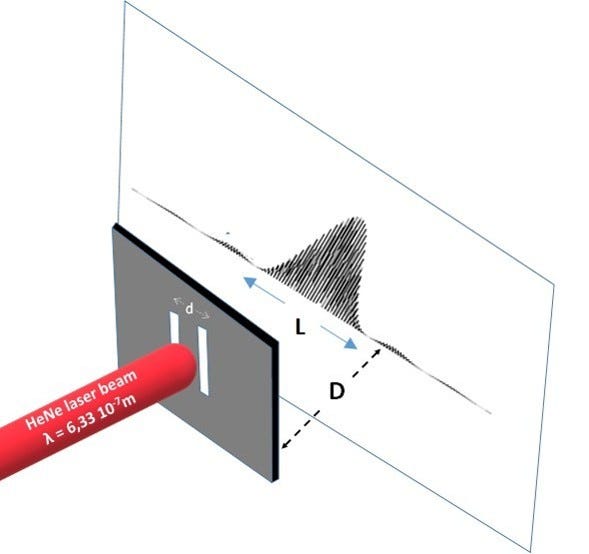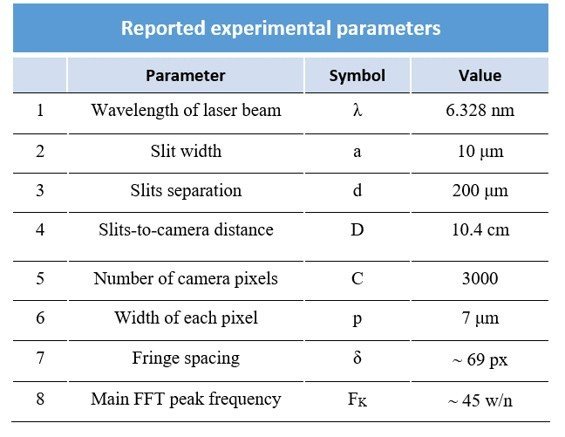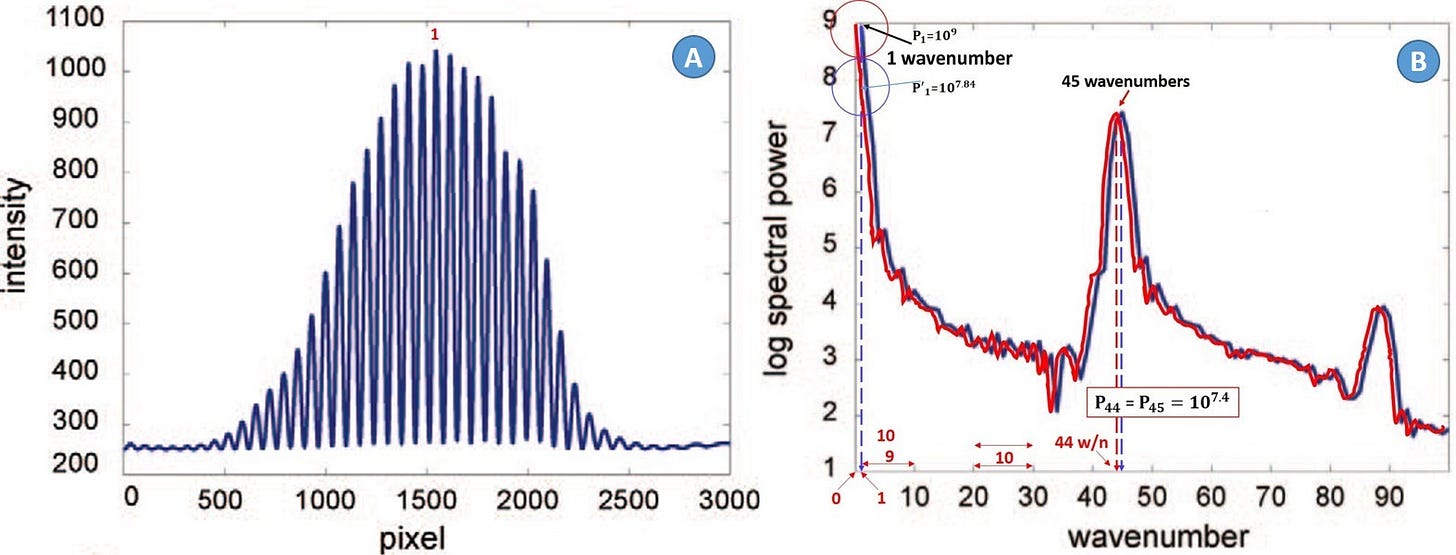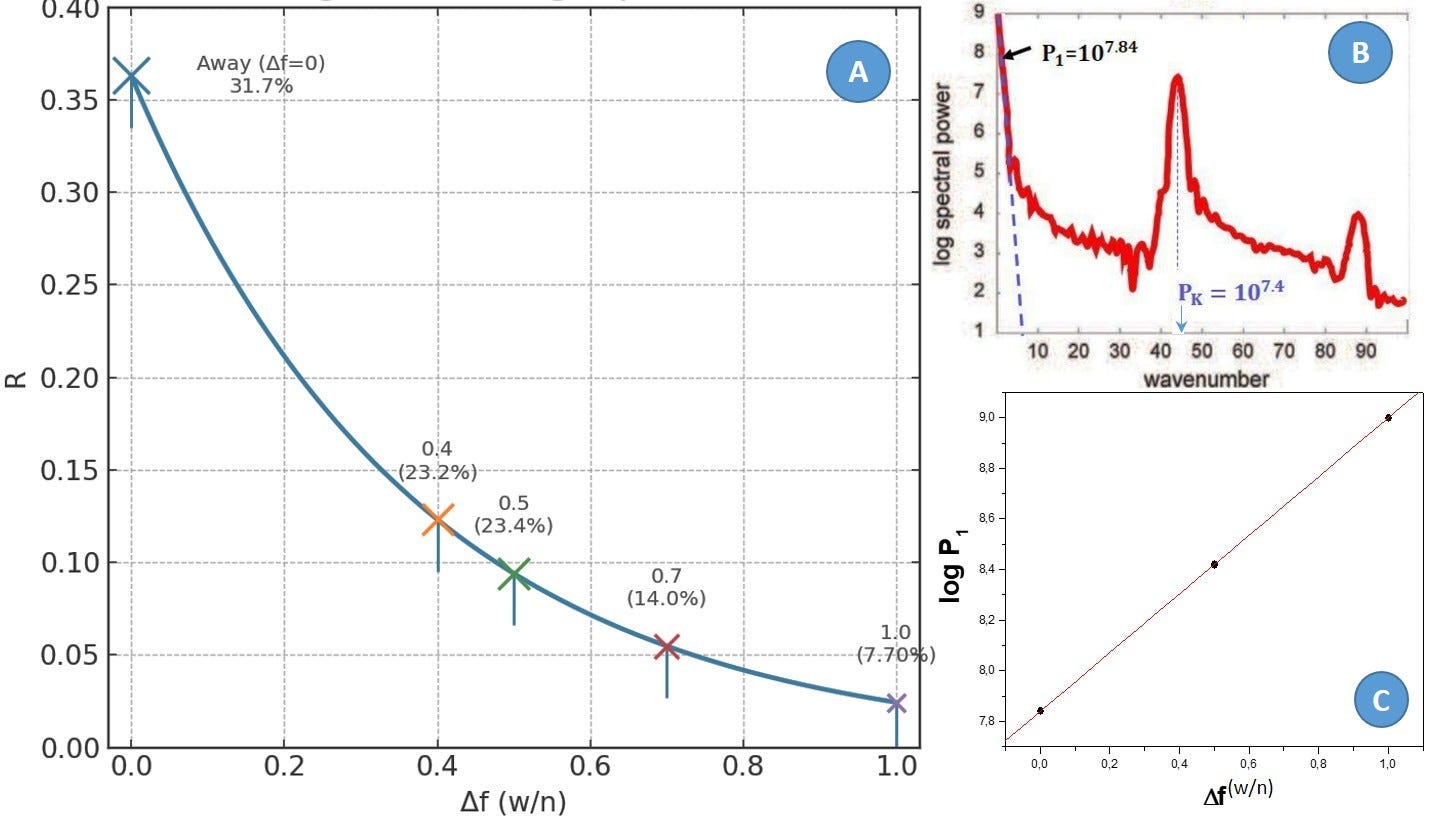Did Attention Really Collapse the Photon Wavefunction?
Magic tricks that exploit scientific principles have amazed audiences for centuries—this one was peer-reviewed.
Two major tests converge: no mind–matter effect. The 2012 double-slit paper’s contrary claim rests on a software-imposed spectral shift.
In prior posts, I examined two of the most extensive investigations of MicroPK. The multi-lab RNG replication reported null results (Jahn et al., 2000); my reanalysis of a 380-study MicroPK meta-analysis showed that the small reported departure from chance in the database is explained by publication bias and related experimenter effects rather than mind–matter interaction (Bösch et al., 2006; Pallikari, 2023).
Against this backdrop, a 2012 paper claimed that a characteristic of consciousness (“intention”) can affect matter—here, a laser-light double-slit system—by collapsing the photon wavefunction, an inference drawn from changes in a measure based on fringe visibility recorded by a digital camera. The claim was echoed in follow-up papers. I originally reviewed the 2012 setup in On the Question of Wavefunction Collapse in a Double-Slit Diffraction Experiment (Pallikari, 2012). In this updated analysis I revisit that work with clearer quantification and new forensic observations indicating parameter inconsistencies and deliberate spectral manipulation.

The Reported Experimental Setup
The arrangement is standard (Fig. 1): HeNe laser (wavelength λ) illuminates a double-slit (slit width a, separation d); the far-field interference pattern is recorded at distance D by a digital camera. The authors reported pixel size, fringe spacing, and main FFT peak spatial frequency among other experimental parameters (Table 1). Notably, the paper gave a camera pixel height of 0.2 μm, which is wrong by a factor of 1,000 relative to the manufacturer’s 200 μm specification (Thorlabs. (n.d.).
All formulas used here are presented in the companion post, The Physics of a Double-Slit Experiment: Testing Internal Consistency published concurrently (Pallikari, 2025b). I cite them below by their ‘A’ labels (e.g., A7, A18) for clarity.

Discrepant Parameters: the Slit-to-Camera Distance D
The 2012 paper reports a fringe spacing within the central diffraction band of δ≈69px. It also gives a slit-to-camera distance of D1=10.4 cm, later “corrected” in a follow-up to D2=14.0 cm, attributing D1 to a dyslexic error. Both distances are inconsistent with the paper’s own parameters.
Substituting the reported δ and the other experimental parameters (Table 1) into the standard double-slit relation (A2) yields D≈15.3 cm; not 10.4 cm or 14.0 cm. This discrepancy is the first clear red flag.

Measurements from the Published Graphs
The 2012 report states a fringe spacing of δ=69 px, but direct measurement of the 3,000-px-wide interference record (Fig. 2A) gives δ=67.8±0.4 px. From the central bright-fringe profile, the visibility is Vpattern ≈ 0.60. Using the same record’s FFT power spectrum (Fig. 2B) and the equations in the companion Appendix to this post (eqs. A14–A15), the visibility is VFFT ≈ 0.16.
The mismatch arises because the published FFT is shifted by +1 wavenumber: the axis has ten 10-w/n divisions, yet the spectrum begins at 1 w/n rather than 0, leaving a conspicuous low-wavenumber gap (0-1 w/n) and omitting the zero-wavenumber (DC) component at K=0, which is proportional to the total light diffracted by both slits. This shift suppresses the FFT-based visibility to ≈0.16, artificially creating apparent support for the tested hypothesis, even though the interference record indicates V≈0.60.
The Unnatural +1 wavenumber Shift of the FFT
In the published spectrum (Fig. 2B, black trace), the zero- (DC) component—proportional to total intensity—is absent; the first displayed point is at 1 w/n, displaying spectral power P1=109 a.u. The main peak is shown at K=45 w/n. Reinstating the spectrum—shifting the plotted curve left by 1 w/n (red trace)—places the peak at K=44 w/n and restores the spectrum to start at 0 w/n, matching the fringe spacing inferred from the interference pattern (Appendix, eq. A3 via eqs. A11–A13).

The visibility computed from the reinstated spectrum is now V≈0.60, consistent with the interference-pattern estimate, independently supporting the corrected placement of the FFT (Appendix, eqs. A14–A20).
In short, the +1 w/n spectral shift artificially suppresses the FFT-based visibility—from ≈0.60 to ≈0.16—creating the appearance of a ‘consciousness effect’ in the physical system.

Why the Shift Matters
The +1 wavenumber displacement inflates the denominator P1 in the key ratio R=PK/P1 (eq. A14) from P’1=107.84 to P1=109 (Fig. 2B). Because V depends on R (eq. A15), the derived fringe visibility drops, from ≈ 0.60 (equation A20) to ≈ 0.16 (eq. A15- A16).
As demonstrated in the companion Appendix (Fig. 3A), even a 0≤Δf≤1 wavenumber offset of the plotted spectrum produces large changes in R, thereby creating the illusion of a consciousness effect where none exists.
Note. A full replication kit containing figures, derivations, and supporting files is archived on Zenodo (Pallikari, 2025a).
The Spectral Shift Simulates Consciousness-Related Effect
An almost imperceptible spectral displacement 0≤Δf≤1 w/n reduces R (Fig. 3A), providing a straightforward means to simulate a mind–matter effect in the “towards” condition. Multiple lines of evidence in the main text and Appendix indicate that the FFT published in 2012 corresponds to the shifted spectrum—the “attention-towards” condition—produced in software; the reinstated spectrum (“attention-away,” absent from the 2012 paper) is the unshifted baseline.
In our reconstruction the “towards” blocks used discrete shifts Δf∈{0.4,0.5,0.7,1.0} with session exposures of 23.2%, 23.4%, 14.0%, and 7.70%, respectively; “away” (baseline, Δf=0) occupied 31.7%. Because R decays roughly exponentially with Δf, the raw R values cluster near R(0)≈0.363 (away) and R(1)≈0.025 (towards), with scatter from ordinary sources (finite sampling, sensor/electronic noise, mild laser-power flicker, alignment drift, digitization/windowing). When the data are pooled-z-scored within a session (as in the 2012 analysis) and the imbalanced timing is preserved, the standardized means reproduce the reported split (Away =+0.28, Towards =−0.13), as shown in Fig. 4 of the 2012 publication—without invoking any influence of consciousness.
Epilogue
Von Neumann—and later Wigner—speculated that consciousness might collapse the quantum wave function (von Neumann, 1955; Mehra, 1995). Wigner later moved away from that view, treating state reduction as an objective physical event rather than something triggered by consciousness (Esfeld, 1999; see also Thaheld, 2005).
Contemporary work provides no confirmed evidence that consciousness collapses the wave function (Chalmers & McQueen, 2021; de Barros & Oas, 2016; Ibison & Jeffers, 1998): some argue the hypothesis is unfalsifiable (de Barros & Oas, 2016), while others propose testable versions that remain unverified (Chalmers & McQueen, 2021). Independent analyses likewise conclude that quantum mechanics needs no consciousness to solve its problems (Yu & Nikolić, 2011).
The idea persists in popular accounts and in a few experimental claims, including the double-slit study reviewed here (Pallikari, 2012). Our forensic analysis finds no evidence of a mind–matter effect (intention influencing the laser beam). The apparent positive result in the 2012 report reduces to error—in this case, a small software-implemented shift of the FFT spectrum that creates the illusion of an effect. As shown here, the reported outcome can be generated entirely in code by shifting the spectrum by less than one wavenumber, without any physical action of consciousness on the system (Pallikari, 2022; 2024a; 2024b).
A truly sensitive test of quantum theory and consciousness would require metrological accuracy and audit-ready procedures that leave no room for the multiple faults documented in this publication. The level of scientific rigor observed here is incompatible with the precision such a test demands. Claims that consciousness directly affects matter must meet the standards for any physical hypothesis.
Where the stakes include the nature of reality itself, transparency, replication, and integrity are the safeguards against being misled by the very phenomena we wish to understand.
References
Bösch, H., Steinkamp, F., & Boller, E. (2006). Examining psychokinesis—A meta-analysis. Psychological Bulletin, 132(4), 497–523. https://doi.org/10.1037/0033-2909.132.4.497
Chalmers, D. J., & McQueen, K. J. (2021). Consciousness and the collapse of the wave function. arXiv:2105.02314 [quant-ph].
de Barros, J. A., & Oas, G. (2016). Can we falsify the consciousness-causes-collapse hypothesis in quantum mechanics? arXiv:1609.00614 [quant-ph].
Esfeld, M. (1999). Wigner’s view of physical reality. Studies in History and Philosophy of Modern Physics, 30(2), 145–154. https://doi.org/10.1016/S1355-2198(99)00010-1
Ibison, M., & Jeffers, S. (1998). A double-slit diffraction experiment to investigate claims of consciousness-related anomalies. Journal of Scientific Exploration, 12(4), 543–550.
Jahn, R. G., Dunne, B. J., Nelson, R. D., Dobyns, Y. H., & Bradish, G. J. (2000). Mind/Machine Interaction Consortium: PortREG replication experiments. Journal of Scientific Exploration, 14(4), 499–555.
Mehra, J. (Ed.). (1995). The Collected Works of Eugene Paul Wigner. Part B, Vol. 6: Philosophical Reflections and Syntheses (Annotated by G. G. Emch). Springer.
Pallikari, F. (2012). On the question of wavefunction collapse in a double-slit diffraction experiment. arXiv:1210.0432 [quant-ph].
Pallikari, F. (2022). The double-slit experiment and the conscious observer [Video].
Pallikari, F. (2023). Understanding the nature of psychokinesis. Journal of Anomalistics (JAnom), 23(1), 103–131.
Pallikari, F. (2024a). Evaluating a double-slit diffraction and psychokinesis experiment [Video].
Pallikari, F. (2024b). Experimental misconduct in psychokinesis [Video].
Pallikari, F. (2025a). Replication kit: Double-slit forensic analysis. Zenodo. https://doi.org/10.5281/zenodo.16918500
Pallikari, F. (2025b). The physics of a double-slit experiment: Testing Internal Consistency. Substack. https://fotinipallikari.substack.com/p/the-physics-of-a-double-slit-experiment
Thaheld, F. H. (2005). Does consciousness really collapse the wave function? arXiv:quant-ph/0509042
Thorlabs. (n.d.). USB 2.0 CCD line camera with external trigger [Datasheet]. Catalog V20, p. 1307.
von Neumann, J. (1955). Mathematical Foundations of Quantum Mechanics (R. T. Beyer, Trans.). Princeton University Press. (Original work published 1932)
Yu, S., & Nikolić, D. (2011). Quantum mechanics needs no consciousness (to solve its problems). Annalen der Physik, 523(11), 931–938. https://doi.org/10.1002/andp.201100078
Note. Supporting derivations, figures, and source files are available in the replication kit archived at Zenodo: https://doi.org/10.5281/zenodo.16918500.

